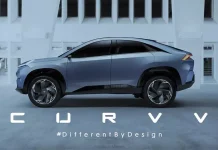This resurgence of manual transmission vehicles is intriguing, given the broader industry trend towards automation and electric vehicles.
There are several factors and observations that can be derived from this data:
- Nostalgia and Driving Experience: As technology becomes more integrated into our lives and cars become more autonomous, there’s a segment of the population that yearns for a tactile, raw driving experience. This is analogous to the revival of vinyl records in the music industry. Even though digital music is more convenient and offers a crispy sound, vinyl provides a tangible, nostalgic experience that many cherish.
- Engagement and Control: Driving a manual transmission car offers a level of engagement that’s not available in automatic vehicles. This is especially true for car enthusiasts who appreciate the mechanical relationship between the driver and the vehicle.
- Safety and Distraction: The mention of manual transmissions being a way to deter texting while driving is a novel perspective. In an age where distracted driving is a significant concern, a manual vehicle inherently demands more attention from the driver.
- Performance and Enthusiast Segment: The top-selling manual vehicles being sportier models isn’t surprising. These cars cater to a niche, enthusiast market that often associates manual transmissions with performance, even if modern automatics can outperform them in terms of raw speed and efficiency.
- Affordability and Market: While the article suggests that cost savings aren’t the primary motivation, there’s still a segment of the market that might view manual transmission vehicles as more straightforward and, therefore, cheaper to maintain in the long run.
- Global Influence: In many parts of the world, manual transmissions are still dominant, either due to tradition or economics. As globalization continues and cultures intertwine, the preferences of one region might influence another.
- Future Predictions: With the automotive industry’s aggressive push towards electric vehicles (EVs), the long-term future of manual transmissions remains uncertain. Electric vehicles typically use single-speed transmissions, making the traditional manual setup irrelevant. However, as EV technology evolves, there might be room for some innovation that brings a manual-like experience to these cars, catering to the enthusiasts.




Pros of manual transmission vehicles:
- More engaging driving experience. Many people find manual transmission cars to be more fun and rewarding to drive.
- More control over the vehicle. Manual transmission drivers have more control over the vehicle’s speed and acceleration, which can be beneficial in certain situations, such as driving in snow or ice, or towing a trailer.
- Better fuel economy. Manual transmission cars typically get better fuel economy than automatic transmission cars.
- Less expensive to purchase and maintain. Manual transmission cars are typically less expensive to purchase and maintain than automatic transmission cars.
Cons of manual transmission vehicles:
- Steeper learning curve. It can take some time and practice to learn how to drive a manual transmission car smoothly.
- More tiring to drive in traffic. Manual transmission cars require more driver input than automatic transmission cars, which can be tiring in heavy traffic.
- More difficult to drive on hills. Manual transmission cars can be more difficult to drive on hills, especially for new drivers.
- Less common. Manual transmission cars are becoming less common, which can make it more difficult to find one to purchase or have serviced.
Conclusion
The modest resurgence in manual transmission vehicle sales underscores the ever-present human desire for tactile and authentic experiences, even amidst rapid technological evolution. This trend reminds automakers and industry observers alike of the importance of understanding varied consumer motivations and the enduring allure of traditional experiences.
As the automotive world leans heavily towards automation and electric vehicles, there’s still a niche market cherishing the visceral engagement a manual transmission provides. While its long-term future in the grand scheme of transportation is uncertain, the manual transmission stands as a testament to the sentiment that not all things old fade away; some evolve and find new value in a changing world.
While the trend towards manual transmissions might not be explosive, it showcases the importance of catering to niche markets and understanding the underlying motivations of consumers. It’s a testament to the fact that even in an increasingly digitized world, there’s value in traditional, tactile experiences.





































